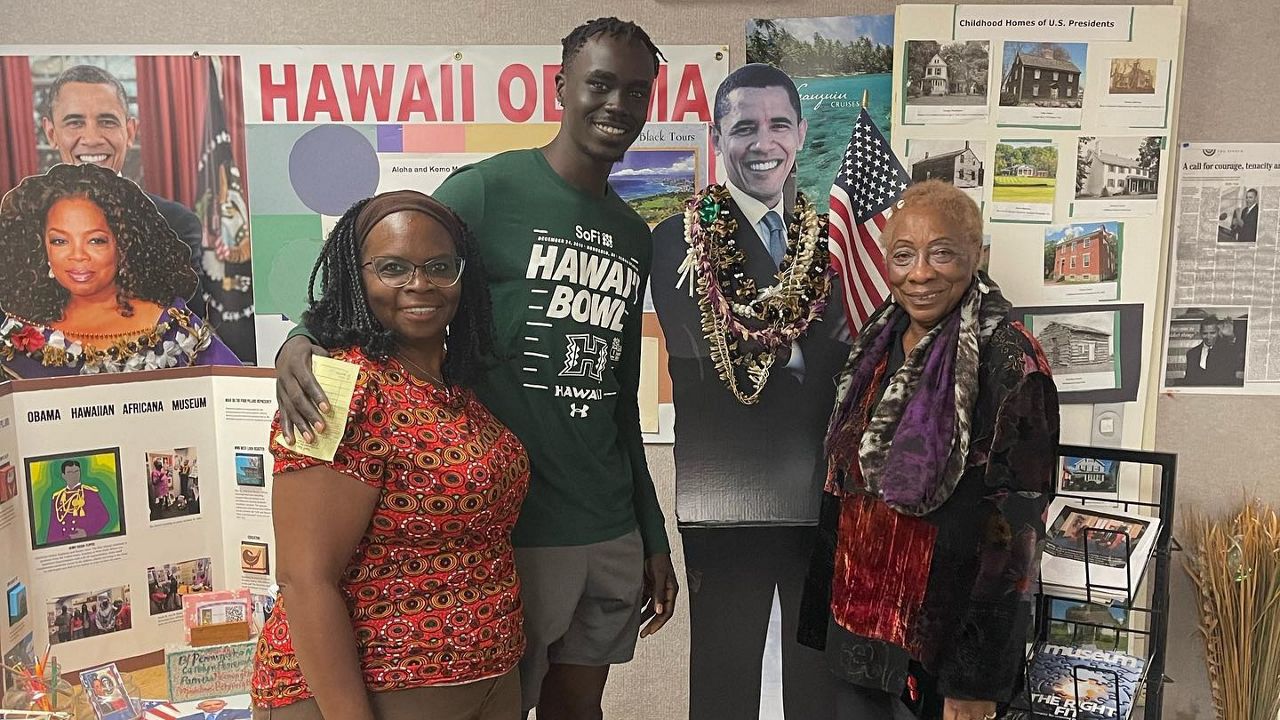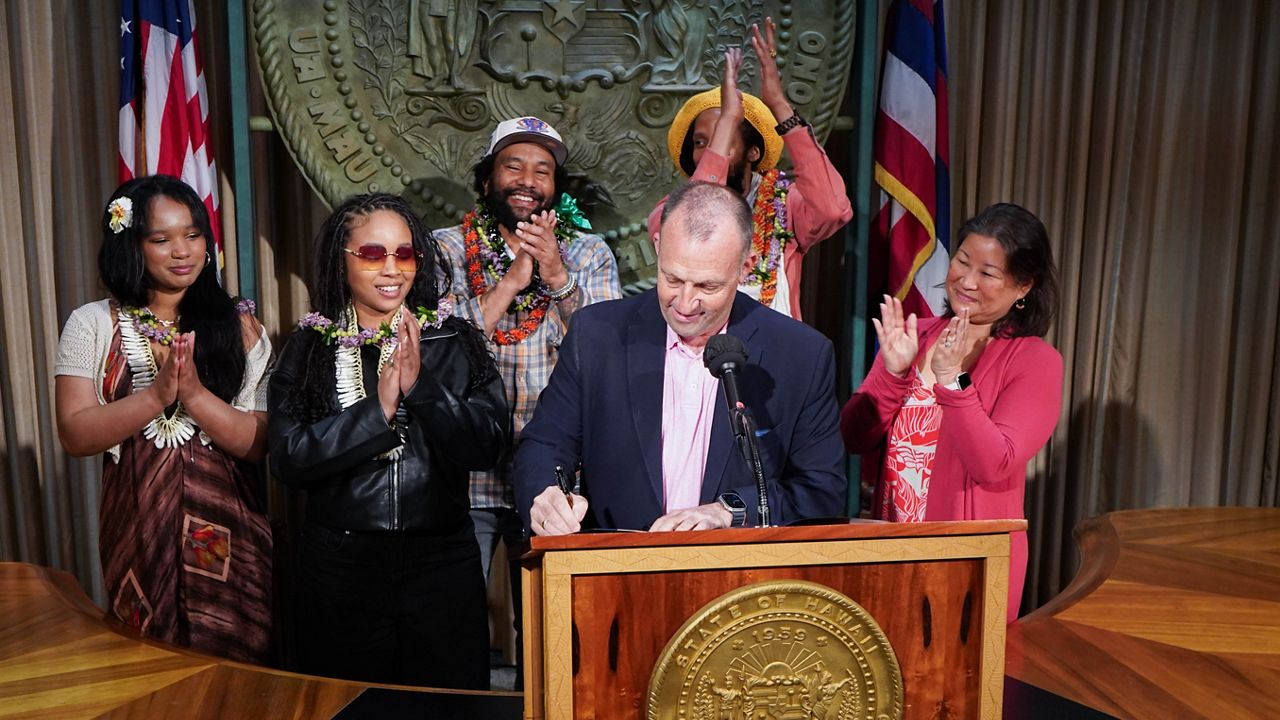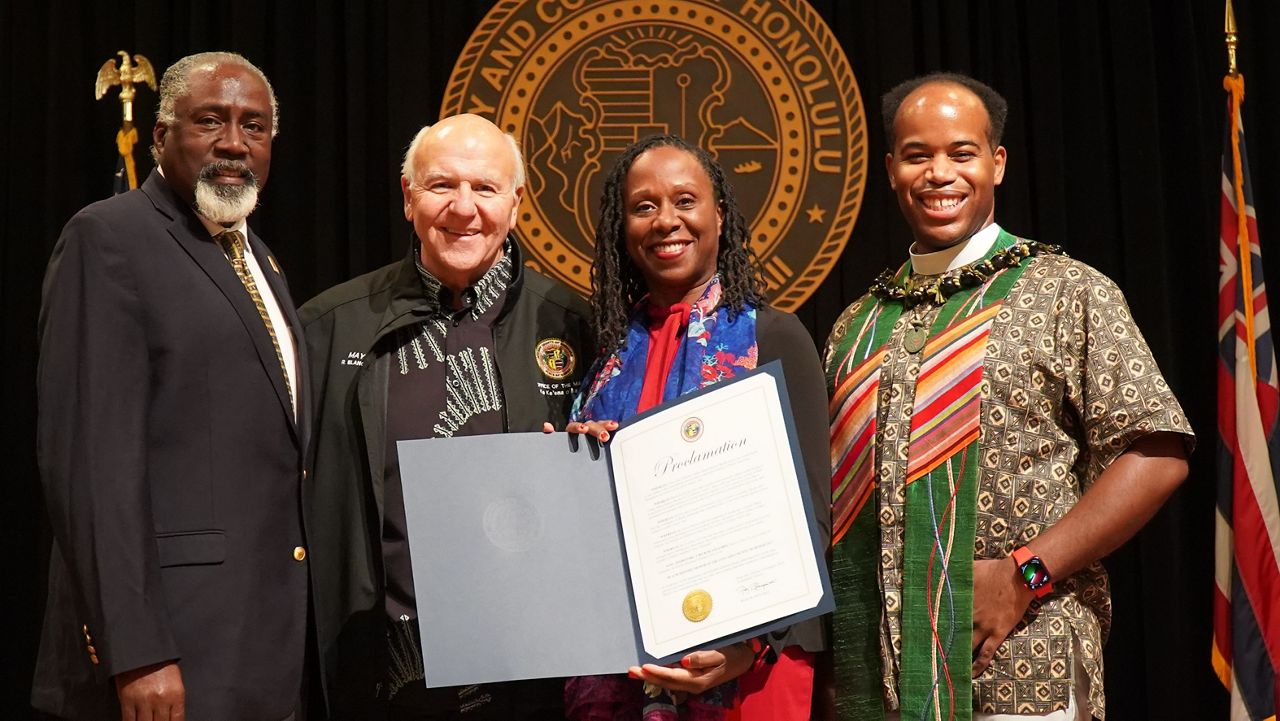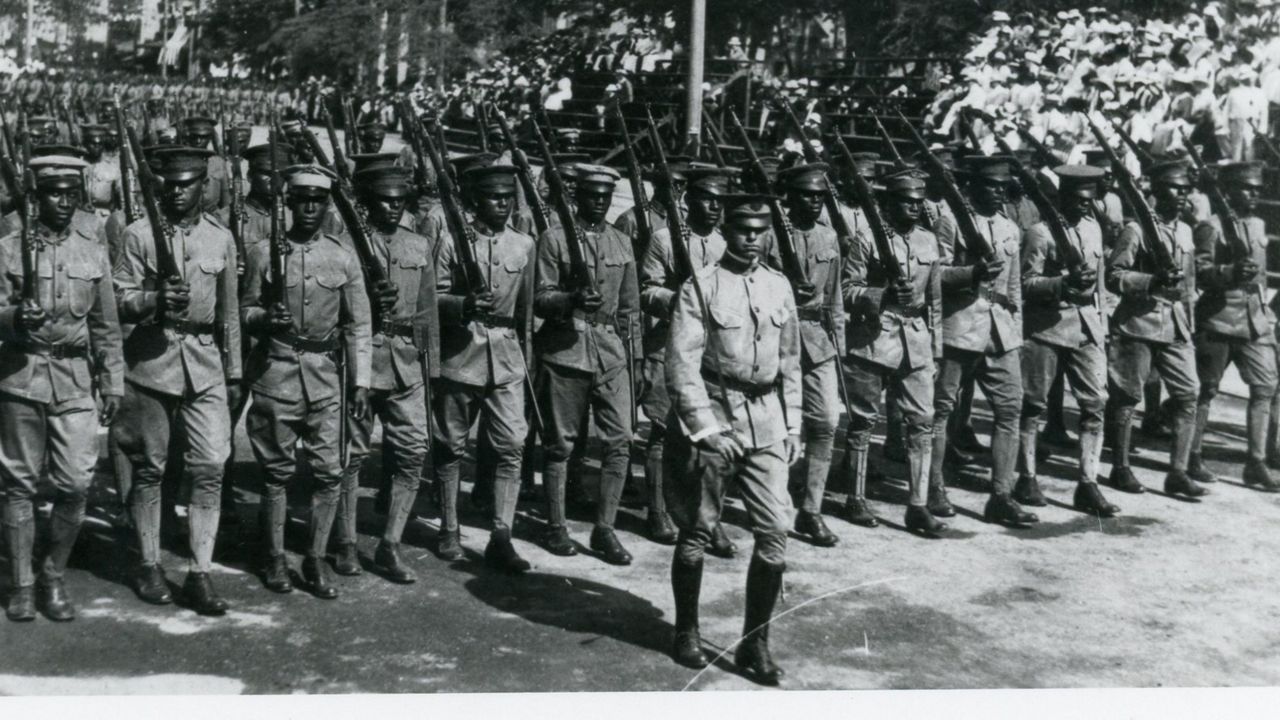The Obama Hawaiian Africana Museum honors not just the history of its namesake, former President Barack Obama, who was born in Hawaii, but also the 200-year history of Black people in Hawaii. It also serves as a gathering place for Hawaii’s Black community.
“The Obama Museum has brought people wanting to know the (former president’s) history, and then we bring it back to the 200 years of (Hawaii’s Black) history,” said the museum’s Operations Manager Raphael Hickman.
The nonprofit museum was formerly called the African American Diversity Coalition but took on the name inspired by the former president in 2018. The museum’s founder, Deloris Guttman, said the name change has had the benefit of bringing in more people.
The nonprofit museum attracts local, mainland and international visitors. Guttman said many people discover the Obama Hawaiian Africana Museum after Googling for Black communities.
“They are looking for that connection here on the island, with a small percentage being Black,” said Hickman. “We've had visitors … come and vent … We had someone that had a racist experience with a local and just came to connect and try to heal.”
He also described it as an inclusive space. The Obama Hawaiian Africana Museum has partnered with We Are Oceania, a nonprofit that supports Micronesians and Pacific Islanders in Hawaii. Hickman said there is a connection between how Black people have been discriminated against in the U.S. and how Micronesians are now being discriminated against in Hawaii.
How the museum started
The idea for the museum germinated in 1997 when Guttman gave books and educational materials on Black history to a 10-year-old girl who was the only Black child at Honowai Elementary School in Waipahu.
“The local people weren't familiar with African American children in the school,” said Guttman.
After that, the Department of Education asked Guttman to provide workshops to educate teachers on the history of Black people in Hawaii.
An educational mission
A pillar of the nonprofit is to share Hawaii’s Black history in school classrooms and through museum exhibits.
“Our mission statement is … to preserve, perpetuate and promote the contribution of people of African descent to Hawaii’s history … and our audience are pre-K through 12th grade,” said Guttman.
However, the museum is currently fundraising in order to hire more people to help coordinate educational outreach.
“We’re doing fundraising to make sure we acquire funding to keep our school program,” said Guttman. “There are a lot of requests for our services. … I’m overwhelmed.”
Obama's childhood home
The museum is also fundraising in order to be able to purchase Barack Obama’s childhood home at 2234 University Avenue in Manoa.
Since 2000, the museum has been located at 1311 Kapiolani Boulevard, Suite 203, near Ala Moana Center.
According to Guttman, the new location would serve “as a gathering place for people to talk” and strengthen the community component of the organization.
Guttman is currently completing a nomination form in hopes of getting Obama’s boyhood home on the National Register, which would cement its importance and help guide future stewardship of the structure. Many other childhood homes of former presidents are already listed on the National Register, such as Abraham Lincoln’s in Indiana and Ronald Reagan’s in Illinois.
Preserving the past
Along with sharing Hawaii’s Black history, Guttman has preserved it.
During World War II, Pearl Harbor was the largest site of Black servicemen in the world. Over 1,800 Black sailors who worked at the Naval Aviation Supply Depot in Hawaii lived in segregated housing known as the Manana Barracks. About 100 Quonset huts were built in 1944 at Manana Barracks, but only Quonset Hut 33 remains, which once served as the galley storehouse for the Black community.
Quonset Hut 33, which is located at the Pearl City Urban Garden Center, was added to the National Register earlier this month after being nominated by Guttman.
Guttman has also worked to preserve the legacy of Anthony D. Allen, who was one of the first Black men in Hawaii. Allen was born into slavery in New York, but he eventually fled on a commercial whaling ship, which traveled around the world before coming to Hawaii in 1810.
Allen settled in the islands and became an advisor to King Kamehameha. He married a Hawaiian woman, raised their three children on his six-acre property in Waikiki, and became a successful businessman.
Now, Washington Middle School sits at the site of Allen’s land and in 2021, it was designated as a National Underground Network site with the help of the Obama Hawaiian Africana Museum.
Still, Guttman said more research needs to be done on Allen’s life, Hawaii’s Black military history and Hawaii's Black history in general.
“That story still needs to be unfolded,” said Guttman.
Visiting and donations
Visitors are welcome to the museum Monday to Friday from 10 a.m. to 4 p.m.
There is no fee, but donations are welcome.
For those who wish to donate to the Obama Hawaiian Africana Museum, please click here.
Michelle Broder Van Dyke covers the Hawaiian Islands for Spectrum News Hawaii. Email her at michelle.brodervandyke@charter.com.







